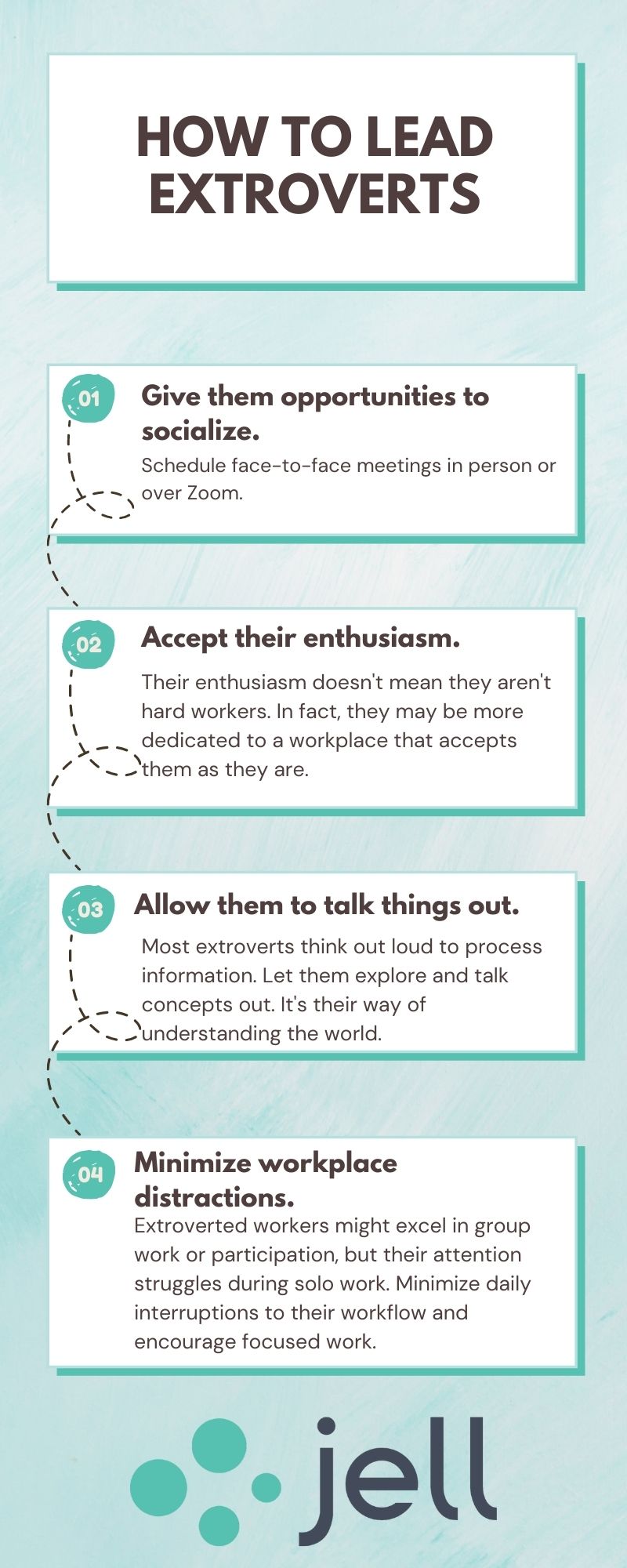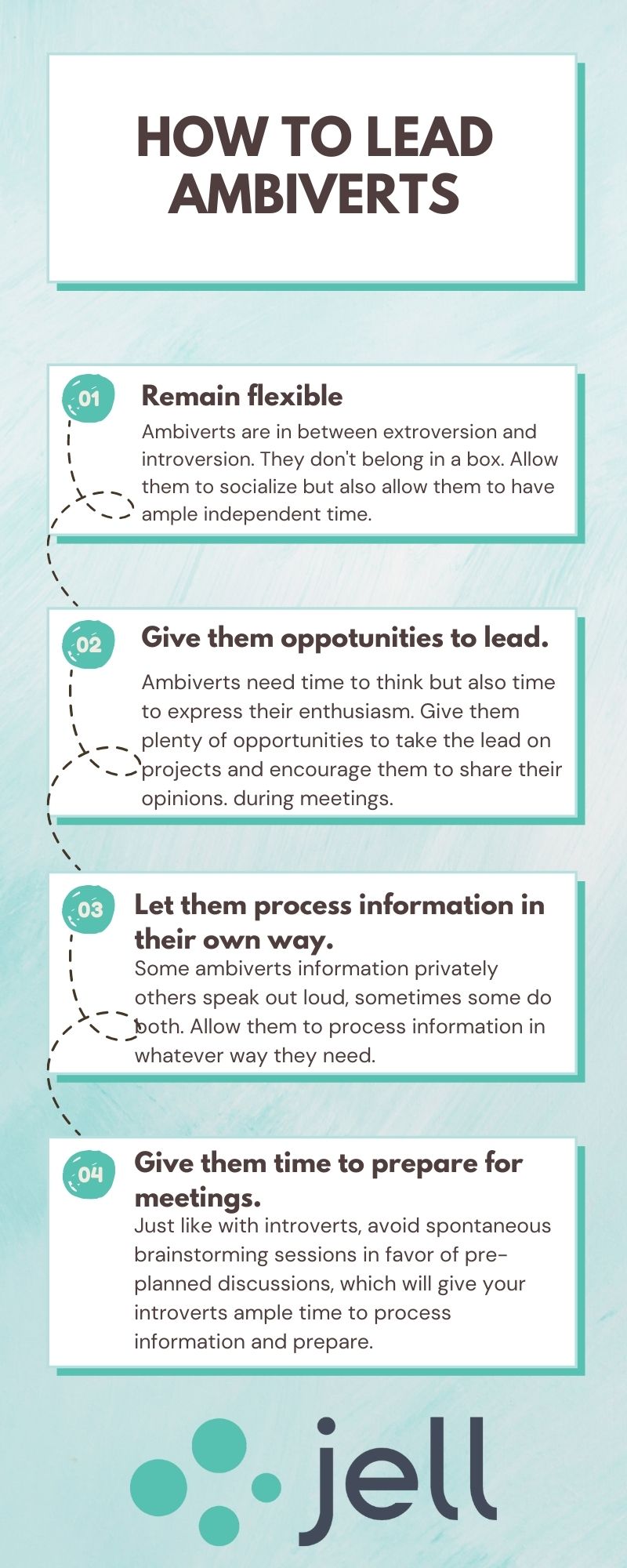
Work personality types: there are a lot of them. I’m going to tell you a story about a young engineer. Once upon a time, this young engineer spent his work hours in an enclosed cubicle at an office where personal computers and scientific calculators were designed. He liked to work alone, preferring solitude over committees and team meetings.
His name was Steve Wozniak. He was an introvert. And he invented the first Apple computer.
Here’s the crazy part of this story:
Wozniak’s managers at the time didn’t recognize the magnitude of what their employee had been able to create while working in relative solitude. The leaders at Hewlett-Packard turned down his prototype five times before he formed a business relationship with Steve Jobs instead.
Below we’ll dive into:
- Employee Personalities and the Complexities of Team Dynamics
- How to Effectively Manage Introverts, Extroverts, Ambiverts, and Mixed Teams
As managers, it’s so important to be tuned in to our employees’ personalities. Whether they’re working on the next great technical innovation or simply working toward your company’s next big goal, people tend to thrive when team culture bends to fit different communication styles and recognizes the unique contributions of individual members—instead of forcing everyone to fit into the same mold.
Right now, you might not be clued into your employees’ disparate needs for productivity and performance. You might even fear overlooking a Steve Wozniak in your midst.
If you’re feeling a little unsettled about your own leadership style among a variety of work personality types, don’t panic. There are ways to channel your inner chameleon and adapt to the distinct needs of each type.
Automated Daily Standup Reminders, Check-Ins & OKRs.
14-day free trial. No credit card required.
Related Articles
How To Avoid The Common Mistakes Of First-Time Managers
What Makes Great Managers Better than Average Ones?
The One on One Meeting: What Every Manager Should Know
Work Personality Types and the Complexities of Team Dynamics
Not long ago, there were introverted employees and extroverted employees. Everyone was separated by office walls or cubicles located in the same office.
Now there are outgoing extroverts working in isolated remote locations, silent introverts being asked to stand up and tell everyone what they’re doing and ambiverts who…wait, what’s an “ambivert?”
I’d like to encourage you, as a team leader, to take stock of the various personalities on your team. This will help you identify when the communication style you use to great effect with one employee is detrimental to the productivity of another. You might even discover some untapped strengths that will help you realize the powerful potential of personality-based leadership.
For example, many leaders aren’t aware that:
Passive employees are often best led by extroverted managers. This study from Harvard, the Wharton Business School and the University of North Carolina at Chapel Hill shows how extrovert leadership characteristics—bold, assertive, talkative and energetic—can be an advantage when a team consists of passive employees.
Researchers Adam Grant, Dave Hofmann and Francesca Gino compared the profitability of 57 different stores within the same U.S. pizza delivery chain. In stores with less assertive employees, those led by extroverts achieved 16% higher profits than those led by introverts. By comparison, stores with proactive employees led by extroverts showed 14% lower profits.
The results of the study suggest that team leaders can open doors to tremendous opportunities simply by learning to accommodate the unique needs of each personality type, as Gino notes:
“Extroverted leadership was an advantage with passive groups, but a disadvantage with proactive groups. These results suggest that introverts can use their strengths to bring out the best in others. Yet introverts’ strengths are often locked up because of the way work is structured.”

Introverted leaders can do well with proactive teams. In her book, Quiet: The Power of Introverts in a World That Can’t Stop Talking, author Susan Cain argues that some of the world’s greatest modern leaders were all introverts. Warren Buffet, Al Gore, Charles Darwin and Google’s Larry Page all made the list. Here’s how Cain described the benefits of introverted leadership in one of the most popular Ted Talks of all time:
“Introverted leaders often deliver better outcomes than extroverts do, because when they are managing proactive employees, they’re much more likely to let those employees run with their ideas, whereas an extrovert can, quite unwittingly, get so excited about things that they’re putting their own stamp on things, and other people’s ideas might not as easily then bubble up to the surface.”
Because introverts prefer listening to speaking, says Cain, they’re more inclined to hear out an idea and aren’t likely to feel threatened by more assertive employees. They also tend to be more disposed than their outgoing counterparts to carefully process the contributions of colleagues and team members.
Many team members fall in the middle of the personality spectrum. Todd Hall, professor of psychology at Biola University, noted: “These are broad categories, and the reality is there is a continuum of introversion to extroversion. So, the people who fall in the middle are not easily categorized as an introvert or an extrovert, and we have this ‘special breed’ combination of ambiverts.”
Here’s where things get tricky:
Teams rarely consist of just one personality type. While certain industries may attract one type over another, most teams will have a mix of all three. And as a manager, you have your own personal preferences for communication and collaboration—which may not always naturally align with the dispositions of people you’re leading.
So…
How should an introverted team leader handle a whirlwind of knocks on the door when all he wants is a quiet place to think? Likewise, how can an extroverted manager get things done when surrounded by quiet thinkers who don’t share her love of out loud brainstorming?
Looking around, we discovered several great ideas from experts. Turns out, there are plenty of ways to adjust team leadership styles to fit three primary personality types in the same workplace.
Manage all personality types with daily asynchronous communication.
14-day free trial. No credit card required.
Work Personality Type #1: How to Lead an Introverted Team Member
On one end of the personality spectrum is the reflective and reserved introvert. In work settings, introverts tend to:
- Think and plan ahead
- Focus on one task or issue at a time
- Draw energy from inner reflection
They are generally uncomfortable with:
- On-the-spot brainstorming
- Loud, open office spaces
- Meetings that lack purposes and agendas
When leading introverts, it’s a good idea to:
- Send your meeting agenda ahead of time so your introverted employees can marinate on things and join the conversation with thought-out contributions.
- Avoid spontaneous brainstorming sessions in favor of pre-planned discussions, which will give your introverts ample time to process information and prepare.
- Offer quiet, closed-door spaces for inner reflection and silent brainstorming. Or, better yet, give your staff the freedom to work remotely as often as needed.

Work Personality Type #2: How to Lead an Extroverted Team Member
Extroverts are outgoing and draw energy from social interactions. In direct contrast to their introverted counterparts, extroverted employees tend to:
- Talk first and think later
- Multitask and brainstorm out loud
- Thrive in group settings and open office concepts
They are generally uncomfortable with:
- Solitary tasks
- Quiet, enclosed spaces with few interruptions
- Meetings with too much structure

To effectively lead extroverts, you can:
- Make time for face-to-face conversations, especially if you rely on online standups and Slack to minimize meetings and foster communication.
- Work team-building activities into your routine or, better yet, hand over the reins to your extroverted team members when it’s time to plan social gatherings.
- Provide opportunities for out-loud thinking, whether it’s an optional group brainstorm or an office area dedicated to impromptu debates and discussions.

Work Personality Type #3: How to Lead an Ambiverted Team Member
And then there’s the “ambivert” who falls smack dab in the middle of the spectrum. You can recognize ambivert employees by their tendencies to:
- Move comfortably from isolation to group settings
- Toggle back and forth between initiating and reacting to ideas
- Adapt to the communication styles around them
You’d have to work hard to make an ambivert uncomfortable.
When leading ambiverts, try to:
- Remain flexible. For example, an ambivert who works remotely may want to take advantage of employee benefits that let him work from a home office and a coworking space.
- Mix things up so ambiverts have equal opportunities to be stimulated by group settings and recharge with alone time to think.

Daily Standups, Check-Ins & OKRs.
14-day free trial. No credit card required.
Popular Articles
Daily Scrum: The tools, methods, and tips to pull them off successfully
5 Ways to Improve Work Performance You Haven’t Tried Yet
5 ways effective teams run daily Slack Standups
Adapting to Multiple Personality Types
As a team leader, it’s your job to adapt to each individual while simultaneously helping everyone work more effectively together. Encouraging your staff to celebrate differences can help everyone stay in sync and reach goals faster.
For instance, you might choose to adopt Jeff Bezos’ strategy for leveling the playing field at meetings by starting with silent reading and thinking. Or, if that’s too much for you, require participants to set aside 15-30 minutes on their own time to prepare ahead. You’ll give introverts time to formulate and share thoughts confidently, motivate extroverts to reflect and listen and provide ambiverts with an opportunity to do both.
You can also structure meetings to accommodate different personalities. Keep them short and on-task, then host optional 15-minute brainstorm sessions for the extroverts when they’re over. For the introverts, you can offer a Slack feed for follow-up ideas.

